5 things I wish I’d known before reviewing the Swytch GO e-bike conversion kit
Swytch offers an effective, albeit untidy, workaround for e–bike–curious riders. But as prices drop on full e-bikes, its value proposition may be fading
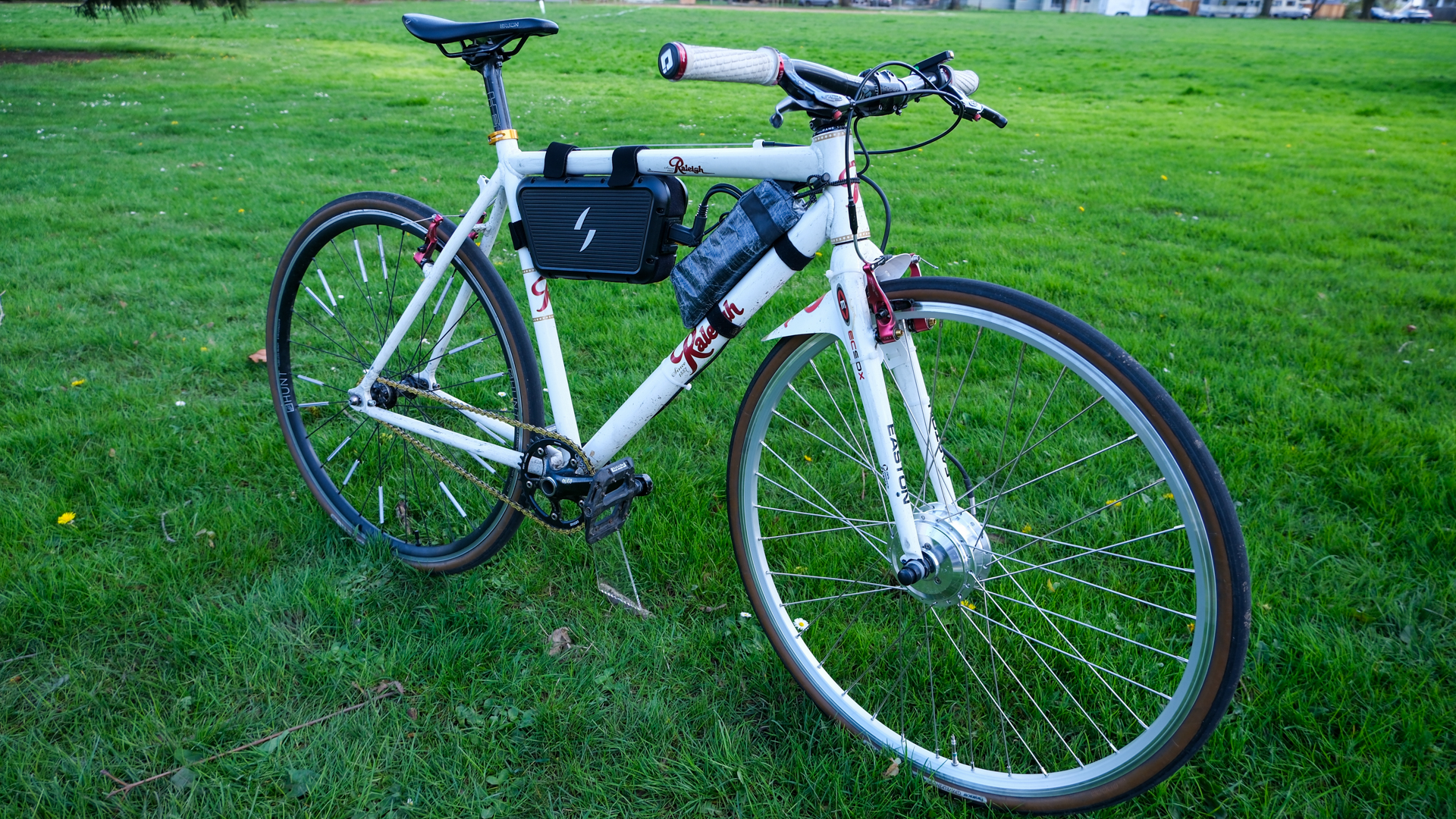
If you already own a compatible bike that you love, enjoy some hands-on tinkering, and like the idea of breathing new life into an old frame, the Swytch Go is a clever and relatively affordable entry point into the world of e-bikes. However, it’s not quite the seamless solution it’s billed as. And as entry-level e-bikes get more affordable, the conversion kit’s value proposition diminishes.
You can trust Cycling Weekly.

There’s something undeniably joyous about riding an e-bike. Even as a fairly capable cyclist, I still get a kick out of hopping on one, gliding along with minimal effort, running errands, commuting, or just cruising without arriving sweaty or racking up dreaded “junk miles.”
I’m a big fan of the e-bike boom we’re experiencing—not just because I’m a lifelong cyclist, but because e-bikes are the great equaliser. They make it easier than ever for people to embrace life on two wheels, maybe drive a little less, and spend more time outdoors. E-bikes let me share my passion with a wider group of people while encouraging a more sustainable lifestyle.
But buying an e-bike can be a daunting and expensive experience, especially if you’re just e-bike-curious and not quite ready to go all in. That’s why one of the most accessible alternatives is converting the bike you already have.
Electric conversion kits are becoming increasingly common, and they’re a smart concept. So many of us have a neglected bike collecting dust in a garage or shed. These kits not only give those bikes a second life, they’re a user-friendly entry into e-biking without the cost of buying a whole new setup.
So when I was offered the chance to review the Swytch GO conversion kit, I was eager to give it a try. Cycling Weekly testers had previously given high marks to the Swytch Air setup, praising its quick installation and sleek design. The Swytch GO+ promised similar ease of use and compatibility, but with the added benefit of a longer battery range.
I took on a long-term review to test its user-friendliness, assess how it performed as a daily around-town ride, and determine whether its $654 / £499 price tag makes it a compelling alternative to an entry-level e-bike.
Overall, the Swytch GO+ conversion kit was a positive experience—but there are a few things I wish I’d known going in that would have made for a smoother process.
Swytch GO electric conversion kit
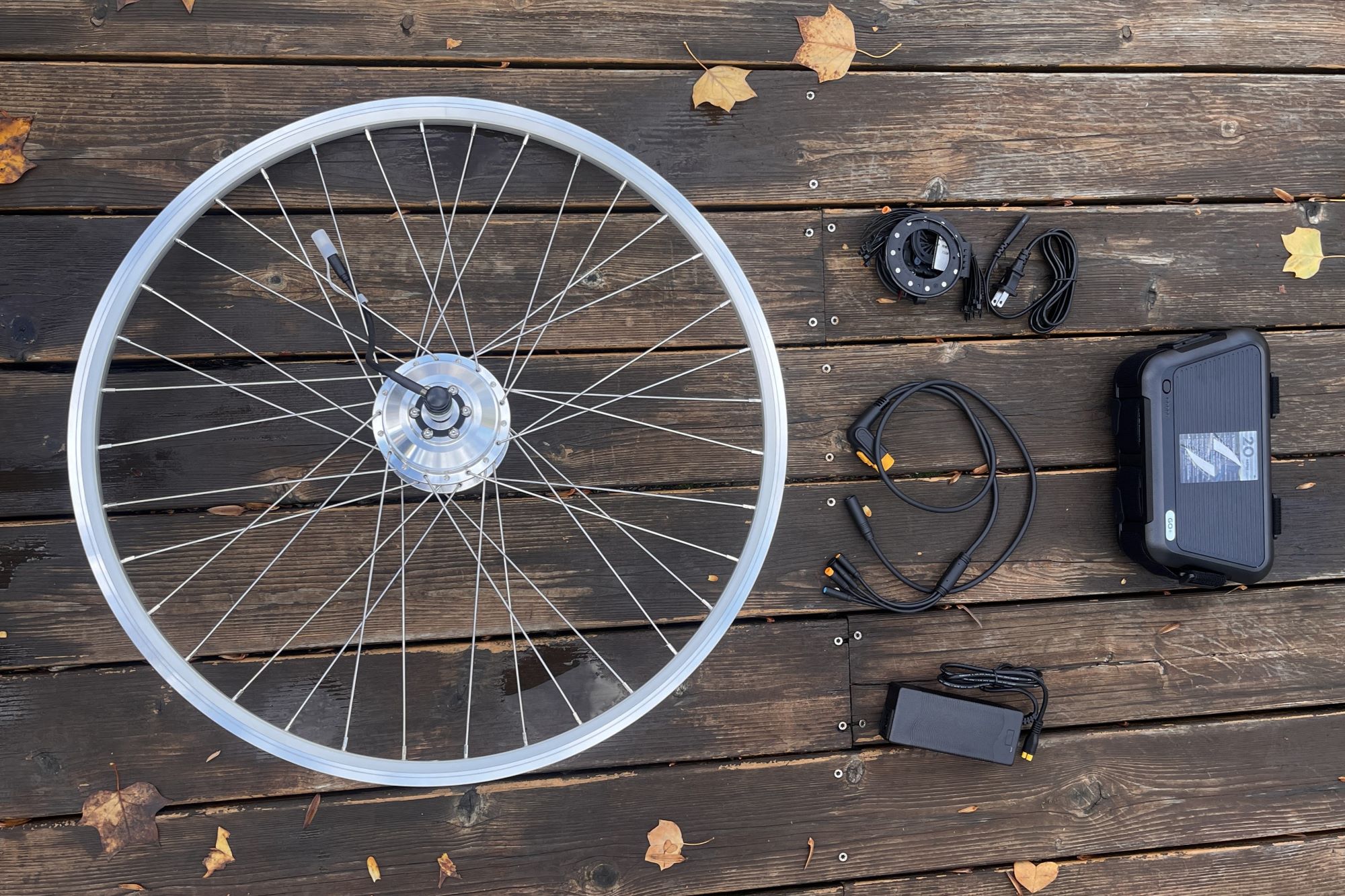
The Swytch GO is an e-bike conversion kit that transforms your existing bicycle into an e-bike by replacing the front wheel with a 250w motor hub and attaching a frame-mounted battery pack to the centre of your bike and, optionally, a display onto your handlebars.
What’s in the box
- A front wheel with a 250w hub motor, providing 40nm of torque and speeds up to 15mph (in the UK/Europe), 20mph in the U.S.
- A Power Pack GO+
- 280Wh
- Range: 30-40 miles
- Weight: 2500g
- Charge time: 4 hours
- Pedal sensors
- An LED handlebar-mounted display
- Charger
- Cables, wires, attachments
- Price: Starts at $525 for the smaller 15-20-mile range, $654 for the 30-40-mile range, and $774 for the 40-60-mile range.
How it works:
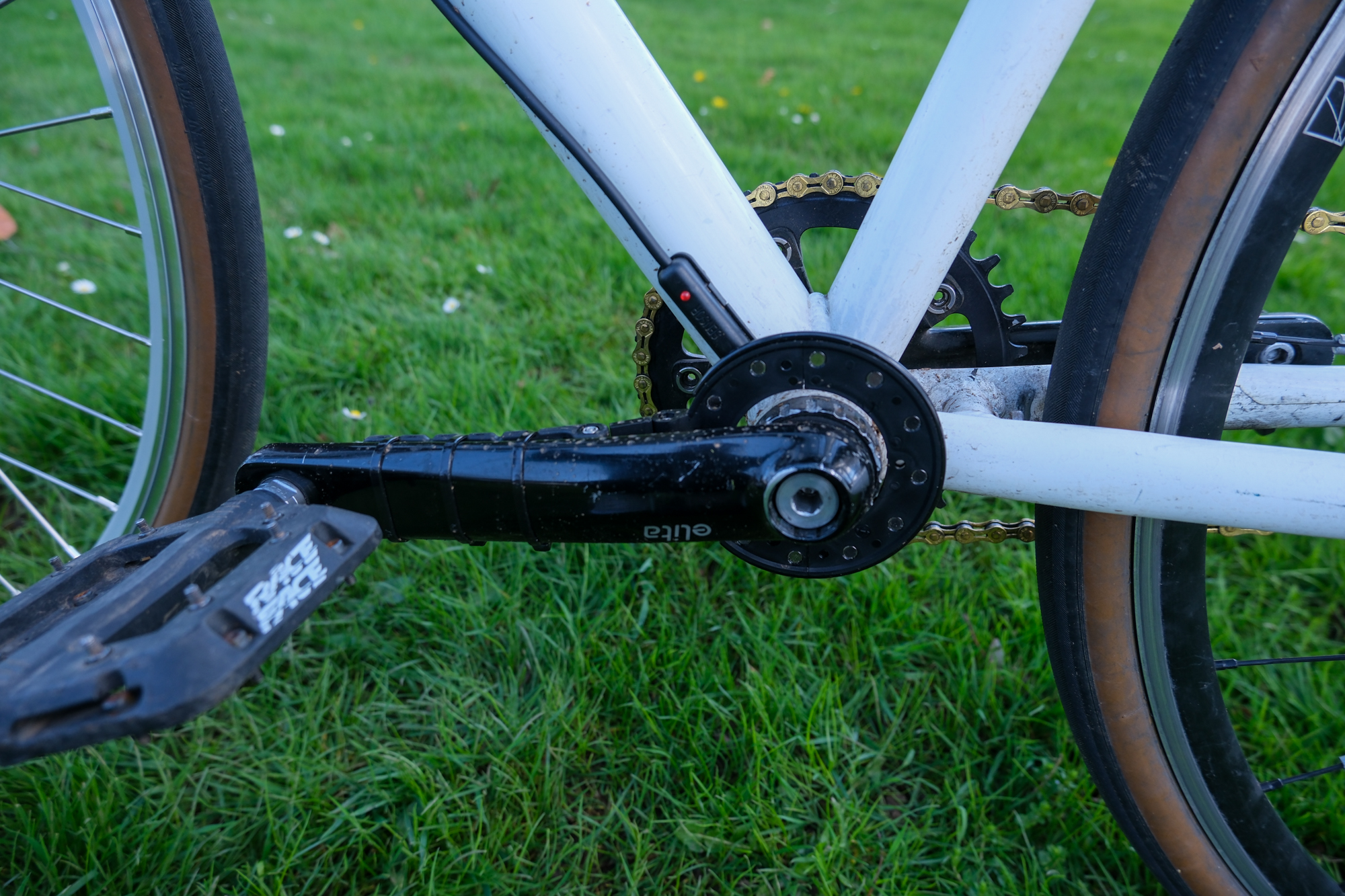
Once you’ve installed the kit, power on the battery pack and the display. The moment you start pedaling, the pedal sensor should detect movement and the hub will engage and offer assist. The pedal sensor communicates with the motor controller, which in turn communicates with the hub and the battery pack. It regulates the flow of electricity from the battery to the motor wheel, controlling speed and torque based on rider input from sensors. When you stop pedaling, the hub disengages.
5 Things I wish I’d known before reviewing the Swytch Go e-bike conversion kit
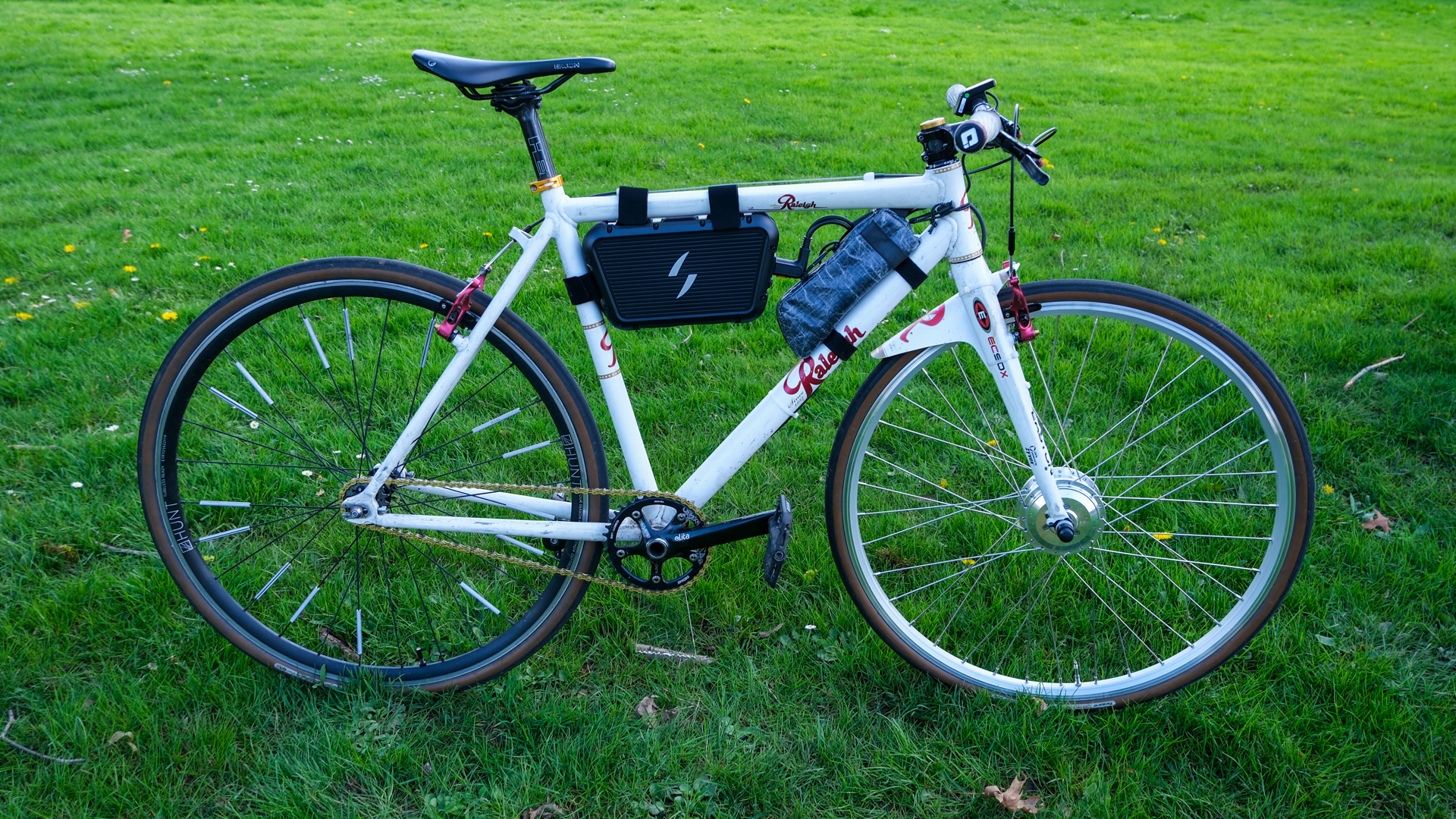
1. Choose your bike very carefully
Swytch claims that its products “fit almost any bike.” Yet my stable of bikes proved to be the exception. While the Swytch motor wheel can accommodate both rim and disc brakes (with a bolt-on rotor), the GO range is not thru-axle compatible. Swytch tells me thru-axle wheels are coming soon—at least for the MAX+ range—but in the meantime, this rendered 95% of my bikes incompatible. That left me with a steel Surly Midnight Special and an aluminium Raleigh Rainier single-speed cyclocross bike. The fork on neither bike readily accepted the wheel without modifications (more on that below), and in the end, I opted to fit the kit to my Raleigh.
It wasn’t long before I realised this had been a mistake. The Raleigh Rainier is a fairly light bike, and the addition of the kit quite literally doubled its weight, significantly affecting handling. On my scale, the Swytch motor wheel—without tube and tyre—weighed 6.57 pounds. The battery pack, cables and accessories added another 8.4 pounds, bringing the total weight gain to 14.97 pounds (6.79 kg). With the front wheel outweighing the rear by so much, the bike felt unbalanced.
Additionally, when converting a single-speed, you’ll likely want to change the gearing. With pedal assist, I found myself spinning out far too quickly with the existing setup. This required a trip to my local bike shop for a larger chainring and a new chain.
In retrospect, a heavier, geared bike would have been a better choice than a light single-speed.

2. Get ready to make some modifications
“The Swytch GO is compatible with universal-type bikes and supports wheel sizes from 26 inches and up,” states Swytch.
But by “universal-type bikes,” they specifically mean bikes with a 100mm front axle and 9mm or 10mm dropouts.
The website includes a handy compatibility form but the listing is somewhat limited. While my contact at Swytch assured me that one of my bikes would be able to fit the kit, it wasn’t without some modifications and time investment.
Upon receiving the kit, I realised the axle of the motor wheel was too big for the forks on both of my quick-release-equipped bikes. In this scenario, Swytch recommends filing down the axle flats until they fit. So off to the hardware store I went to pick up a metal file. I carefully filed—taking care not to damage the threads—then tested the fit, then filed some more. It took quite a while to remove the approximately 1mm of aluminium needed for the axle to fit into the dropouts.
I got it to fit in the end, but it was a cumbersome process and, to be honest, it dampened some of the “new bike day” excitement.

3. It's not as clean looking I thought
Here’s how the website depicts the kit:
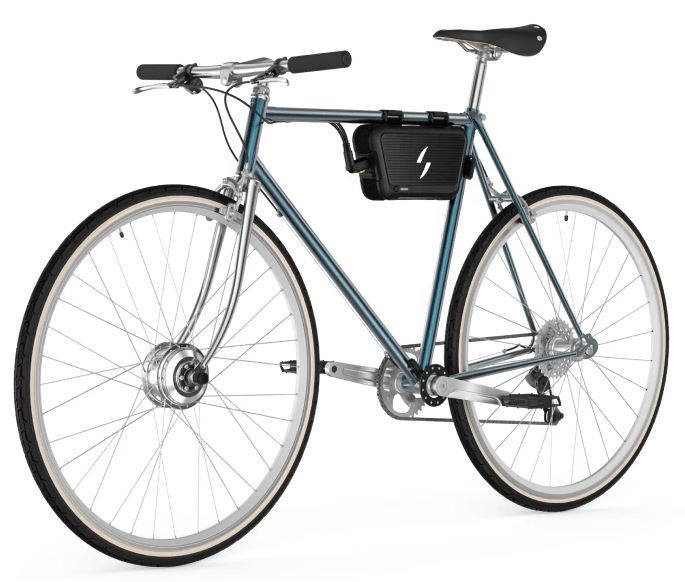
Here’s what it looks in real life

On the website, the Swytch GO kit looks sleek, with clean lines that don’t disrupt the bike’s silhouette. In reality, there are wires and zip ties everywhere. The pedal sensor by the crank arm needs to communicate with the motor controller inside the battery pack, which is mounted somewhere in the bike’s main triangle. The front hub also needs to send and receive signals and power, and finally, the handlebar display must be plugged in for power and data. That means you’re running cables all over the bike. Swytch includes a wire harness to manage all these connections, but they still need to be secured to the frame in some way. And, unless you’re handy with shortening and soldering wires, you are also likely to end up bunching up the excess and zip-tying them to the frame. Or, as I did, stuffing them all into a frame bag in a half-hearted attempt to tidy things up.
Call me vain, but I care about my bike’s aesthetics—and the messy look is a bit off-putting.
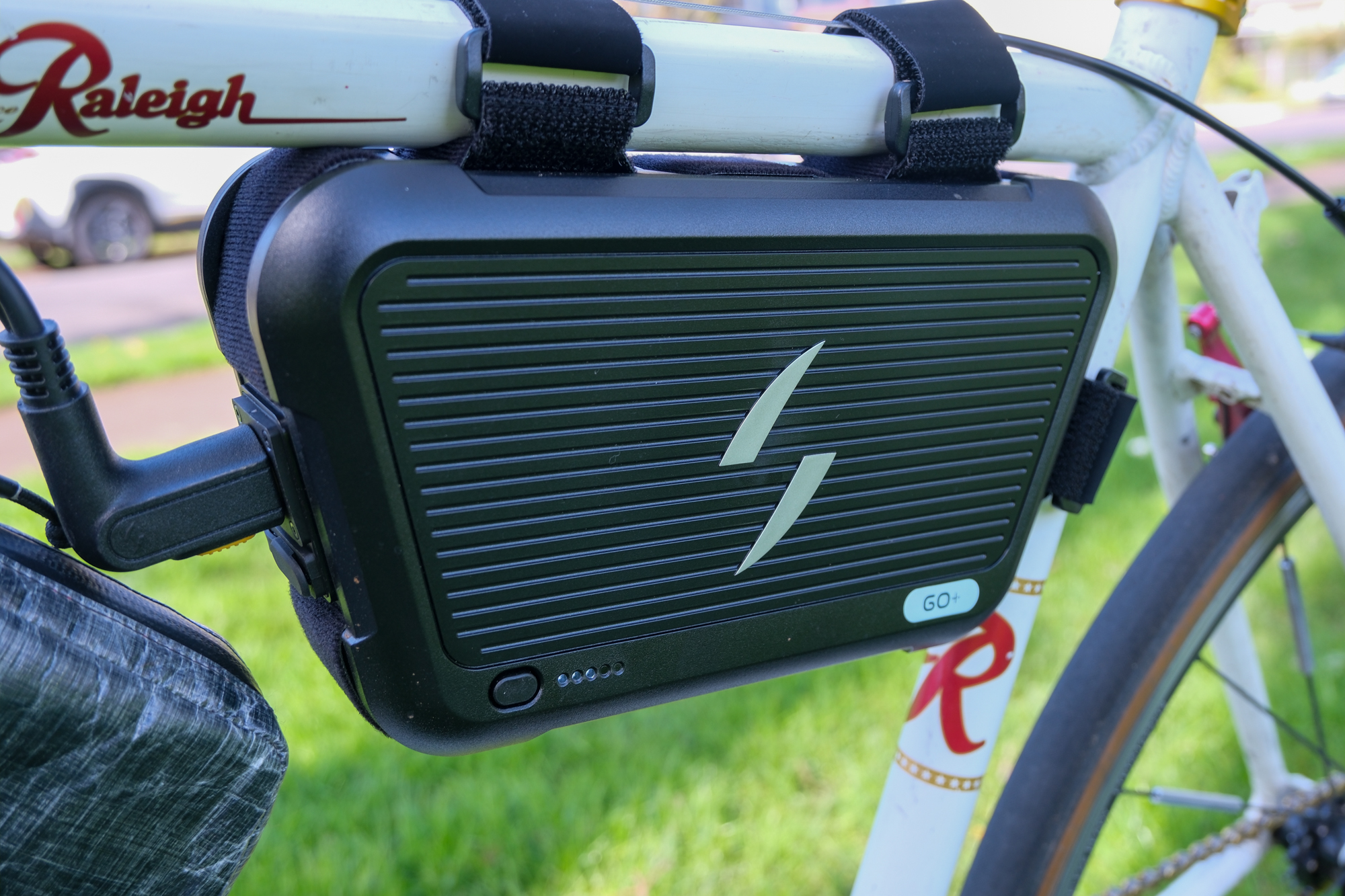
4. The battery is easy removed – but also easily stolen
The GO power pack attached to the bike frame using a set of strong velcro straps. This allows the user to attach the battery pack wherever it’s convenient—be it the top tube, downtube, seat tube or luggage rack. It works well: the velcro straps are secure and the battery does not sway or rattle at all. The pack can also be easily removed for charging or swapped between bikes should you have multiple Swytch-equipped bikes.
However, this also means it can be easily stolen. This may be a non-issue if you live in a safe area, have secure bike parking, or don’t intend to use the Swytch system on a commuter bike. But if security is a concern, your best option is to remove the battery and carry it with you. At nearly six pounds, though, it’s not very convenient.
If you’re using the Swytch kit for your commute, perhaps the Swytch Air would be a better option. It’s more portable and for many, a 15-to-20 mile range is plenty for a day of commuting.
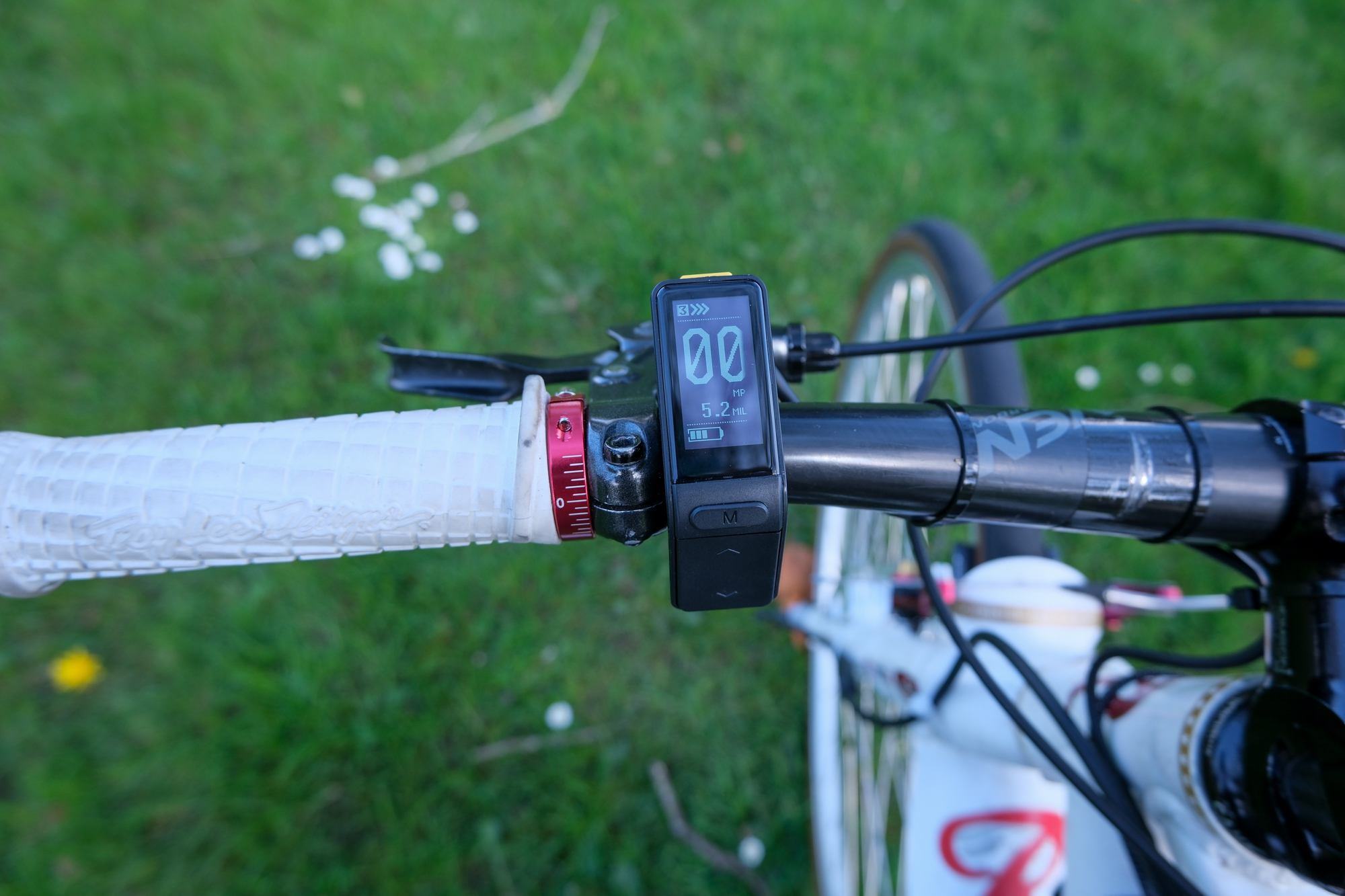
5. It’s going to convince that you do want an e-bike
Once you’re out and riding, most of the downsides quickly fade into the background. It’s genuinely fun to ride. The 250w motor—while on the lower end of the power scale, delivers smooth, steady assistance. It’s also pleasantly quiet.
The steps in between the levels of assistance are gradual, though I admittedly found myself mostly using levels 3 to 5. It feels like riding with a perpetual and steady tailwind, carrying you to your destination. It’s great for stop-and-go city riding and adds a little joy to otherwise mundane trips. Most of all, it encourages you to get out on your bike more often.
In other words, the conversion kit effectively offers the joys and conveniences of a regular e-bike at a smaller price tag. But that brings me to the final question: should you invest in a Swytch Go or just buy an entry-level e-bike?
Conversion kit or entry-level e-bike?
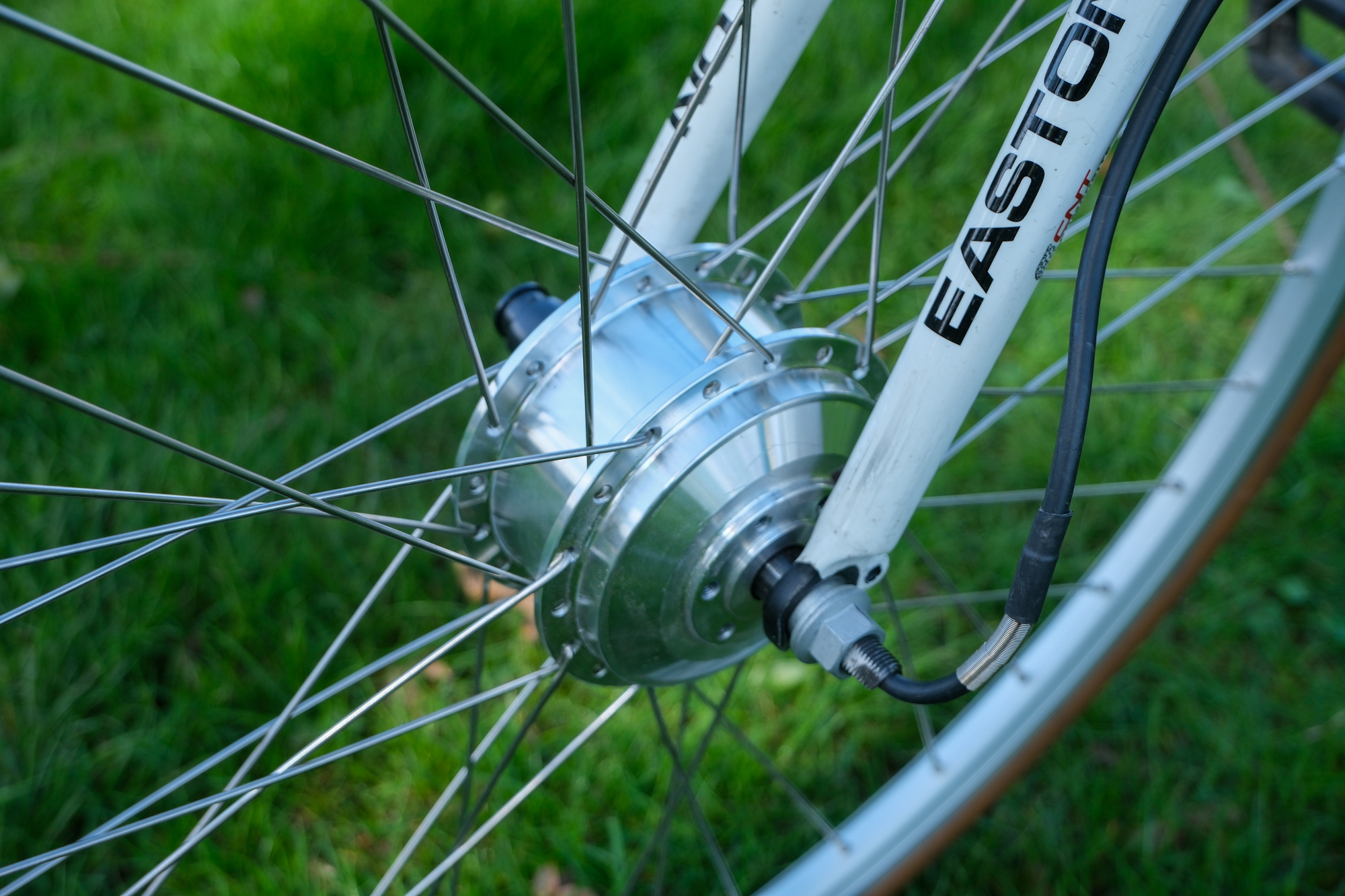
The answer truly depends on your needs and priorities. If you already own a compatible bike that you love, enjoy a bit of hands-on tinkering, and like the idea of giving an old frame a new lease on life, the Swytch Go is a compelling and cost-effective introduction to e-biking.
That said, if you’re already leaning towards buying an e-bike, I’d be inclined to recommend investing in a purpose-built entry-level model.
The kit reviewed here retails for $654/£499 , not including extras like a new chainring, chain, and installation tools. For a slightly higher investment, in the $1,000 to $1,500 (£755 to £1,150) range, brands like Lectric, Velotric, Ride1Up, and Aventon offer ready-to-ride e-bikes with the integrated features and conveniences of modern bikes. For example, many of these models come equipped with fenders/mudguards, integrated lighting and cargo carrying capabilities. Also, most of these bikes tend to come with more powerful motors and larger batteries, offering enhanced range and torque.
While going this route means acquiring and storing another bike, if your old ride is gathering dust anyway, consider donating it to a local charity or community cycling programme for a second life with someone else.
The Swytch GO is a clever solution for the right rider. But as e-bikes are getting more affordable, the value proposition is fading. If you’re looking for everyday utility, convenience, and plug-and-play simplicity, a purpose-built e-bike may be the smarter long-term investment.

Thank you for reading 20 articles this month* Join now for unlimited access
Enjoy your first month for just £1 / $1 / €1
*Read 5 free articles per month without a subscription

Join now for unlimited access
Try first month for just £1 / $1 / €1
Get The Leadout Newsletter
The latest race content, interviews, features, reviews and expert buying guides, direct to your inbox!

Cycling Weekly's North American Editor, Anne-Marije Rook is old school. She holds a degree in journalism and started out as a newspaper reporter — in print! She can even be seen bringing a pen and notepad to the press conference.
Originally from the Netherlands, she grew up a bike commuter and didn't find bike racing until her early twenties when living in Seattle, Washington. Strengthened by the many miles spent darting around Seattle's hilly streets on a steel single speed, Rook's progression in the sport was a quick one. As she competed at the elite level, her journalism career followed, and soon, she became a full-time cycling journalist. She's now been a journalist for two decades, including 12 years in cycling.
You must confirm your public display name before commenting
Please logout and then login again, you will then be prompted to enter your display name.
-
 'When everyone starts to panic, you just need to breathe deeply': Fearless approach key to success on Giro d’Italia gravel stage
'When everyone starts to panic, you just need to breathe deeply': Fearless approach key to success on Giro d’Italia gravel stagePello Bilbao expects Strade Bianche-style stage on Sunday to be both a physical and mental challenge
By Tom Thewlis Published
-
 Dr Sarah Ruggins breaks overall record for cycling length of Britain and back
Dr Sarah Ruggins breaks overall record for cycling length of Britain and backCanadian only got into cycling a few years ago, but has now broken the LEJOGLE record
By Adam Becket Published
-
 ‘It’s a terrible idea and it’s really hard’ - Comedian becomes the first person to cover the US coast-to-coast on a BMX bike
‘It’s a terrible idea and it’s really hard’ - Comedian becomes the first person to cover the US coast-to-coast on a BMX bikeSebastian Fowler covered 3333 miles across 11 states in 80 days pedaling a 20-inch BMX bike loaded with 27 kilos of gear
By Caroline Dezendorf Published